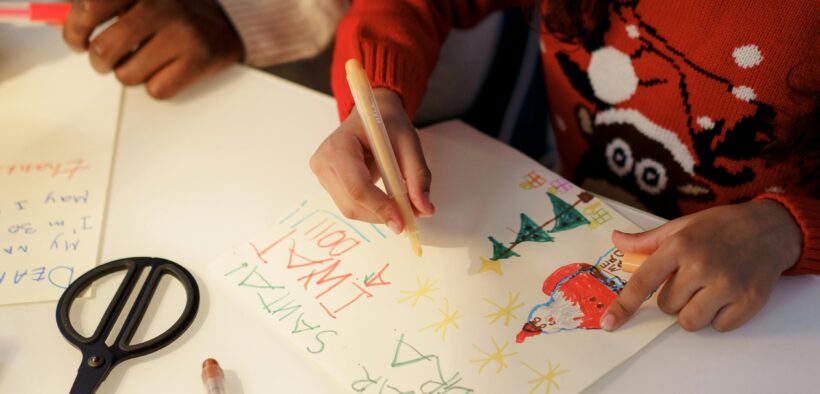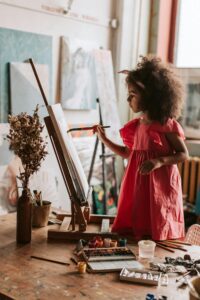Four Ways That Art Helps In Your Child’s Development
Share

Little children are always busy with their next masterpiece, whether it’s a stickman-like family portrait of mommy and daddy standing outside the house or hand-crafted happy birthday cards. But art is more than just about crayons, magazine cut-outs, and water painting. In the creation of art is the development of a child’s skills that will help them in future such as being able to express themselves and appreciate others in every social setting.
For World Arts Day, we’ll be looking at ways that art is beneficial to the growth and early development of children.
Art Helps Children To Respect Themselves and Others
According to findings by Penn State University, making art “helps children to develop a sense of their own individuality, a sense of self-respect, and an appreciation for others’ work”. The more you interact with your child and encourage their creative nature, the more affirmed and validated they feel about their work. Not only will they grow to appreciate their originality, this confidence instilled at a young age will help them be comfortable with their own creativity and they will be able to give other kids the same grace about their works.

Making Art Helps Children Develop Fine Motor Skills
Making art may entail being able to hold a pencil properly or being able to master the proper grip of a paint brush. Either way, this part of art creation helps the child to develop fine motor skills. In between carefully cutting out pictures to make a collage or colouring within the lines with a crayon, children “are improving control of the small muscles in their hands.” And with more artful exercises, children slowly build up enough power and muscle memory that they carry over to writing or other everyday tasks that require precision-dependent finger control like knotting shoe laces.

Art Develops a Child’s Math Skills
Art is not just about colours and the imagination. In all that goes into making art, children have to understand size, quantity, and shapes in order to create something that mirrors reality. Findings by Michigan State University state that children “can learn, create, and begin to understand concepts like size shape, making comparisons, counting and spatial reasoning” from creating, which stimulates their numerical intelligence.

Creating Art Helps Children With Self-Expression
In the creation of art is usually the task of explaining it to another person who might not understand it. Asking your child about what their drawing means or what inspired them to do it, pushes your child to form their own sentences and reasoning capacity and to be assertive about what they wish to say. The same studies by Michigan State University say, “as children describe and share their artwork, as well as their process, they develop language skills” and “learn new vocabulary words regarding their project.”

Sources:
Art – an opportunity to develop children’s skills by Penn State University
The art of creating: Why art is important for early childhood development by MSU Extension




